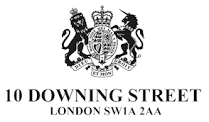| (the area covered is that of the Government Office for the East Midlands – Derbyshire, Leicestershire, Lincolnshire, Northamptonshire, Nottinghamshire, Derby, Leicester, Nottingham and Rutland)
Objectives of the Strategic Plan
The Strategic Plan sets out the SRA’s plan to tackle the industry’s problems and its priorities for the short, medium and long to:
- restore stability in the industry, allowing performance to improve;
- deliver growth to meet the 10 Year Plan core targets of:
– 50% increase in passenger kilometres
– reduction in overcrowding which breaches the SRA’s s tandards
– 80% increase in freight tonne-kilometres
- build a pipeline of projects at different stages of development against which contractors and suppliers can plan.
The plan also meets where possible the SRA’s other priorities set by Government, including better integration with other transport modes, expansion of capacity, and promotion of the use of the railway network.
The priorities have been developed taking into account dialogue with the Rail Passengers’ Committee for the Midlands, the East Midlands Regional Local Government Association and emda, Government Office for the East Midlands and local authorities within the region.
The plan has also been informed by input to the following Multi Modal Studies:
- North South Movements in the East Midlands (M1 Study)
- A453 Nottingham – M1
- West Midlands to East Midlands (W2EM)
National schemes with benefits for the East Midlands
- Train Protection and Warning Systems
- A Company Neutral Revenue Support scheme to be introduced in 2002 for intermodal and ‘less than trainload’ markets
- Freight Facility Grants
- Freight Small Schemes Fund
- Rail Passenger Partnership Fund
- Incremental Outputs Statements for track & signalling and station enhancements
- Training through a National Rail Academy
- National Rail Performance Fund to improve reliability of services
- National Test Track to prove new rolling stock, before it is tested on the Railtrack network.
- A programme of improvements for passengers with disabilities to improve station access and special training for staff.
PRINCIPAL PROJECTS FOR THE EAST MIDLANDS
Developments for 2001 – 2002
Rolling stock
- 34 four-car CrossCountry Voyager trains to replace all loco-hauled services by May 2002. Progressive introduction of new trains during Autumn/Winter 2001/02, delivering extra services and greater reliability. Testing of first of 44 tilting five-car Super Voyager trains, which will deliver faster journey times.
Service development
- Midland Main Line is currently undertaking a feasibility study into the potential for rail services to Corby.
Stations and passenger facilities
- A Customer Service Academy will open in Derby, to provide customer service training for all MML staff.
- East Midlands Parkway station due to open by May 2003, consisting of 4 platforms and a minimum of 500 car parking spaces. A bus service will connect East Midlands Airport and the new station.
RPP proposals
| RPP proposal |
Status |
Output |
| Ilkeston |
Pre-qualified |
New station at Ilkeston |
| South Nottinghamshire Rail Network |
Pre-qualified |
New rail services and stations in the Nottingham travel-to-work area |
IOS Infrastructure
The SRA is supporting, subject to value for money tests, the following incremental improvements to the network in the East Midlands:
| IOS infrastructure scheme |
Main output |
Key requirement |
Expected completion date |
Manchester Piccadilly –
New Mills Central |
Journey time |
improved journey times |
2002 |
Hazel Grove –
Furness Vale |
Capacity |
Additional trains to Furness Vale |
2004-05 |
| Manchester Airport – Nottingham via Stoke-on-Trent |
Capacity |
regular interval service, running earlier and later |
2002 |
| Crewe – Nottingham |
Journey time |
reduced journey time |
2006-07 |
| Nottingham – Sheffield |
Capacity |
2 trains per hour at regular intervals (with 5 min flex) |
2003-04 |
| Beeston – Mansfield Junction |
Operational flexibility |
Ability to use goods lines for passenger traffic |
2003-04 |
| Sheffield – Lincoln |
Capacity |
Change to the signal box opening hours |
2002 |
Developments 2002-2010
Service developments
- CrossCountry service frequencies increased from summer 2003 timetable on core routes, to approximately double the present frequencies, with standard ‘clock face’ timetables and shorter journey times.
- 3 additional MML services in each direction between Sheffield and London from May 2004.
Performance improvements
- Profit sharing between MML and the SRA will begin from 2004; all payments due to the SRA will be reinvested in commensurate passenger benefits.
Rolling stock
- 127 new 125 mph diesel vehicles to replace the present 100 mph MML Turbostar trains by 2005, giving a one third increase in total train capacity.
- Interior refurbishment of MML HSTs.
Franchise negotiations
- The Central Trains franchise is due to expire in 2004. The SRA is looking at the possibility of a two year extension, aimed at achieving an early increase in capacity.
- SRA is negotiating a 2 year franchise extension with GNER to 2005 and details will be announced shortly. Essential requirements include:
- additional incentives for improved operational performance and customer satisfaction
- interior refurbishment of all existing IC225 and HST trains
- a programme of HST reliability modifications
- station improvements.
Stations and passenger facilities
- £22m of enhancements to MML stations, including improvements to stations car parks, passenger information systems, ticketing information, passenger information regarding transport interchange facilities, and cycle storage facilities.
Infrastructure improvements
- Completion of CrossCountry route infrastructure upgrade works at bottlenecks.
- WCML infrastructure upgrade and renewal works to deliver increased capacity, high fast and slow line speeds, improved reliability and performance.
- SRA is procuring design feasibility studies for potential infrastructure capacity enhancements that will be possible when equipment in the Trent (Nottingham and approaches) signalling area is renewed.
- SRA is procuring design feasibility studies for further elements of the ECML upgrade.
- SRA’s intention is to lead a Joint Venture company that will deliver an upgrade of passenger and freight capacity on the ECML. Improvements could include:
- Longer trains and platforms
- Remodelling of Peterborough station
- Development of alternative freight lines to provide increased and segregated capacity between:
- Peterborough and Doncaster via Lincoln
- Doncaster and York
- Northallerton and Ferryhill via Teeside
- Newcastle and Edinburgh, through provision of freight loops New bridge to take East-West services, which currently cross the ECML by a flat junction at Newark, over the ECML; removing this flat junction would improve capacity and reduce operational complexity.
- Capacity improvement works at Finsbury Park, Hitchin, Doncaster, Shaftholme, York, Newcastle and other locations.
Freight
Felixstowe – Nuneaton. Works to provide increased capacity and increased structure gauge clearances to allow rail to handle 9’6″ containers and European swapbodies more effectively, linking Felixstowe with the East and West Coast Main Lines, and reducing heavy lorry flows on the A14.
Other freight schemes:-
Mountsorrell – track and signalling charges to improve efficiency
MML – additional freight capacity, including loops at Desborough
A part of the ECML upgrade, further studies will be undertaken on improvements to handle longer (775m) trains and increased structure gauge clearance on the route.
Channel Tunnel Rail Link (CTRL)
CTRL Section Two extends the new rail link from Ebbsfleet under the Thames to St Pancras. Work commenced in 2001, and the route is expected to be open early in 2007. Works include:
- St Pancras remodelling, to accommodate Eurostar trains with an extended original train shed, and provide new platforms both for services using the Midland Main Line and domestic services from the CTRL
- Construction of a new sub-surface station box at St Pancras and a tunnel link to the Great Northern route at Belle Isle junction, North of Kings Cross. This will permit twelve car operation and allow Great Northern services to be integrated into the Thameslink network.
Long Term (Beyond 2010)
Beyond 2010, the role of the railways will become even more important, and the key network capacity issues will have to be addressed. In particular, this involves:
- High Speed Line. Additional capacity between London, the North of England and Scotland for both freight and passenger services; to include consideration of a new line with a high speed capability, and provision of capacity for more north – south rail freight movements;
- Kings Cross/St Pancras. Integrated development of the main line and Underground stations (and bus and taxi connections) as a ‘superhub;’
- Multimodal Studies. Development of rail projects identified in the Multi-modal studies;
|


